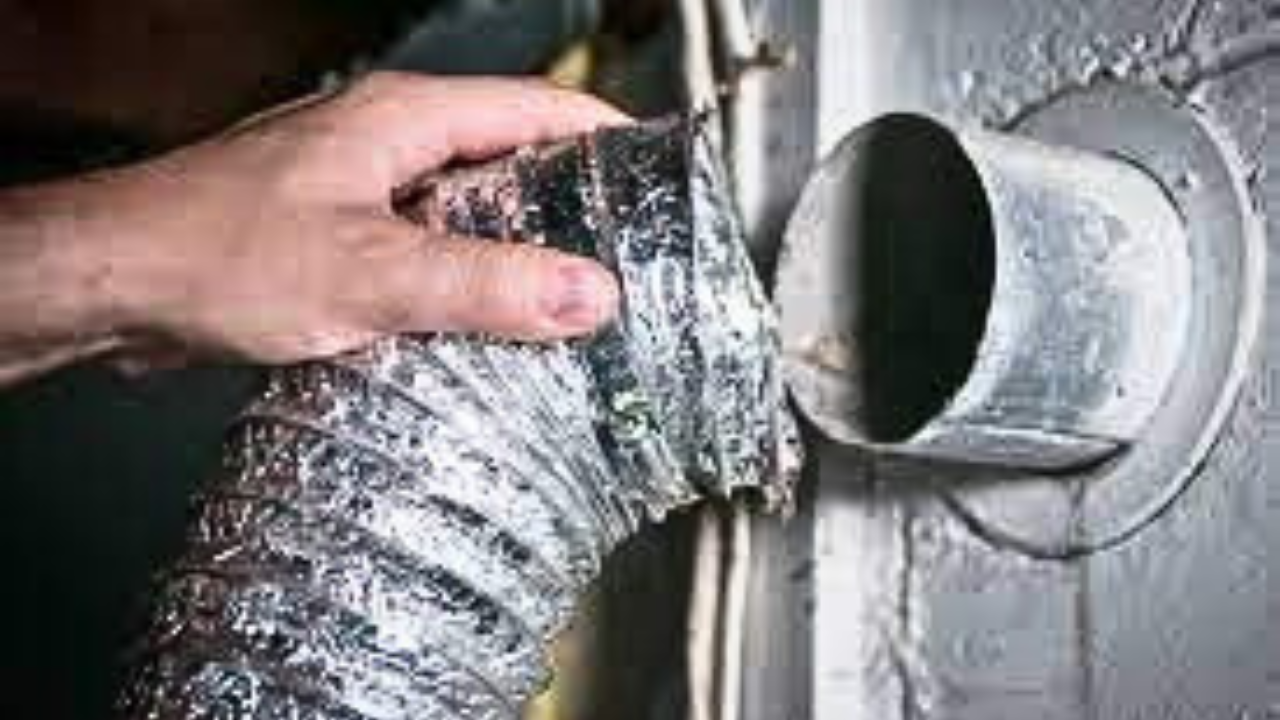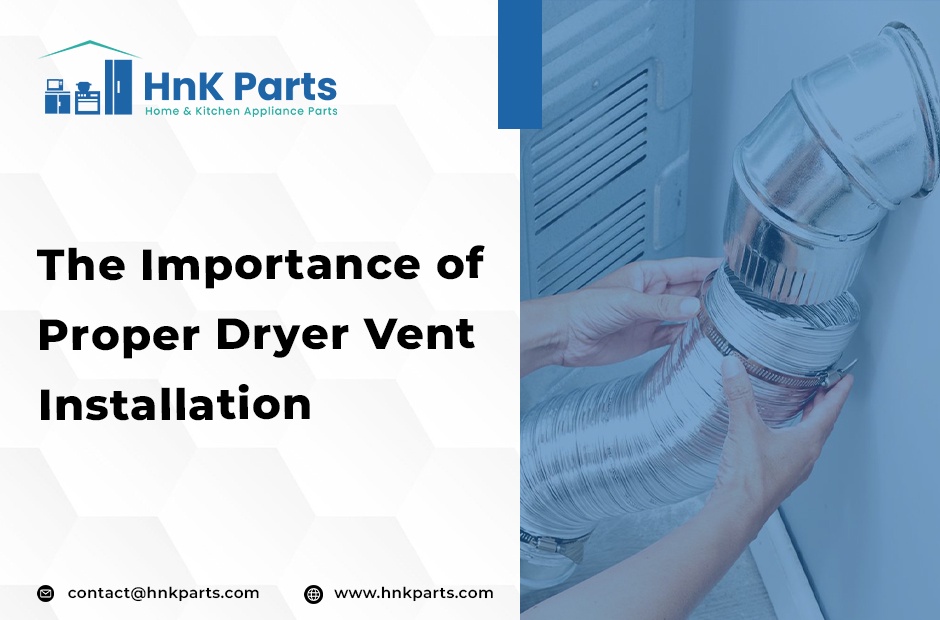|
Table of Contents:
|
Ensuring effective ventilation through your clothes dryer is crucial for maintaining its safety and efficiency. Additionally, a properly vented dryer can significantly extend its lifespan. In gas dryers, adequate venting is paramount to prevent the accumulation of carbon monoxide within your residence.
Insufficient venting stands as the leading culprit behind various common dryer malfunctions, including overheating, failure to heat, startup issues, and inadequate drying. By ensuring unobstructed airflow through the dryer vent installation, many potential breakdowns can be averted.
How to Properly Vent Your Dryer
Ensuring effective ventilation through your clothes dryer is crucial for both safety and efficiency. Properly connecting the dryer exhaust to your home's duct system and regularly maintaining both the dryer and ductwork are key responsibilities in ensuring optimal airflow. This not only promotes the longevity of your dryer but also enhances its overall performance.

The Flexible dryer Vent Installation Behind the Dryer
Ensure to adhere to the dryer vent installation instructions provided in the dryer manual to correctly link the vent duct at the rear of your dryer to the exhaust duct system in your home. Additionally, when selecting and installing a flexible vent between the dryer and your home's exhaust duct inlet, consider the following recommendations:
Opt for the most robust and rigid flexible dryer vent installation, steering clear of flexible vinyl and foil vents as they tend to accumulate lint rapidly. Instead, choose a semi-rigid aluminum vent hose to facilitate smooth airflow from the dryer to the exhaust duct system in your home.
Securely seal the connections of the vent hose using hose clamps to prevent air leakage, which can lead to lint and dust accumulation in your laundry room. For gas dryers, it's crucial to prevent leaks in these connections to avoid the potential entry of carbon monoxide into your home.
Minimize the number of bends in the flexible vent hose and avoid creating kinks. Opting for the straightest path with minimal turns will enhance the flow of exhaust air between the dryer and your home's exhaust duct system.
Upkeep of the Clothes Dryer
To ensure optimal airflow through your dryer and out of your home, it's important to adhere to these maintenance guidelines:
- Always clear the dryer lint screen before commencing each laundry cycle.
- Give the lint screen a monthly rinse with water and a gentle brush to eliminate any buildup of fabric softener residue.
- Schedule cleaning dryer vent duct system at least once annually, or preferably twice if your home's dryer duct extends through the roof.
- By correctly dryer vent installation and installing the dryer vent hose and consistently maintaining your dryer, you'll guarantee smooth and efficient operation over many years.
What Takes Place If the Vent System Becomes Clogged?
Ensuring unobstructed airflow to the outside of your home is crucial for maintaining optimal functionality of your clothes dryer. A variety of issues can arise when exhaust air is impeded:
- Overheating:
- Restricted airflow leads to the overheating of air inside the dryer drum, risking damage to clothes and the potential for a fire due to lint buildup within the dryer cabinet. Should you notice elevated temperatures during operation, inspect the venting for any blockages or bends and promptly clear them.
- Blown Internal Dryer Fuses:
- The dryer is equipped with safety fuses to prevent overheating. If the exhaust air becomes too hot, the thermal fuse will trip, halting the operation of the drive motor in electric dryers or the heating mechanism in gas dryers. The primary cause of blown internal fuses is often a clogged exhaust vent system, underscoring the importance of regular maintenance.
- Inadequate Drying:
- Even if the dryer produces heat, clothes may remain damp if the exhaust vent system is obstructed. Proper airflow through the dryer drum is essential for efficient drying. To remedy this, inspect the vent system for any obstructions and clear them to ensure optimal drying performance.
- Dryer Fires:
- A clogged exhaust vent system can lead to increased lint accumulation within the dryer cabinet, elevating the risk of a fire, particularly in gas dryers. Regularly clearing the exhaust vent system is essential for preventing dryer fires and ensuring safety.
- Carbon Monoxide Poisoning:
- In gas dryers, a blocked exhaust vent system can allow carbon monoxide to accumulate indoors, posing a deadly risk as it is odorless. Alongside maintaining clear venting, installing a carbon monoxide detector is crucial for safety.
- Premature Dryer Failure:
- Continuous overheating due to poor venting can shorten the lifespan of your dryer and increase the likelihood of breakdowns. To maximize longevity and efficiency, it's essential to keep the vent system clear and ensure proper airflow.
Maintaining a clear vent system is essential for the efficient operation of your dryer, promoting safety, longevity, and cost-effectiveness while minimizing environmental impact.
When it comes to maintaining and repairing your dryer, having access to replacement parts is essential for keeping it running smoothly. Here's a breakdown of common replacement parts for dryers:
- Heating Element: Dryers heating element is responsible for generating the heat necessary to dry clothes. Over time, heating elements can wear out or become damaged, requiring replacement to restore proper drying functionality.
- Drum Belt: The drum belt is what rotates the drum of the dryer, allowing clothes to tumble and dry evenly. If the belt becomes worn or breaks, the drum may no longer rotate, resulting in inefficient drying. Replacing the drum belt is a common repair for dryers.
- Drum Rollers and Bearings: Drum rollers and bearings support the drum as it rotates. Over time, these components can wear out, causing squeaking or grinding noises during operation. Replacing worn drum rollers and bearings can restore smooth and quiet operation to your dryer.
- Thermostat: Dryers are equipped with thermostats that regulate the temperature inside the drum. If a thermostat fails or becomes faulty, it can result in overheating or underheating of the dryer. Replacing a malfunctioning thermostat is essential for maintaining proper drying temperatures.
- Timer: The timer controls the various cycles and settings of the dryer. If the timer malfunctions, it may not advance through the cycles correctly or may fail to start the dryer altogether. Replacing a faulty timer can restore proper functionality to your dryer.
In addition to replacement parts, maintaining a clear and unobstructed dryer vent is crucial for efficient and safe operation. Here's why dryer vent installation and maintenance is important:
- Prevents Lint Buildup: Lint from clothes can accumulate in the dryer vent over time, reducing airflow and increasing the risk of a fire.
- Improves Drying Efficiency: A clogged dryer vent restricts airflow, resulting in longer drying times and higher energy consumption.
- Enhances Dryer Performance: Proper venting allows the dryer to expel hot, moist air efficiently, preventing overheating and potential damage to the appliance.
- Reduces Fire Hazard: Lint buildup in the dryer vent is a significant fire hazard. Regular vent maintenance helps minimize this risk and ensures the safety of your home.
To maintain your dryer and dryer vent, consider scheduling regular inspections and cleaning dryer vent by a professional technician. Additionally, be sure to follow manufacturer recommendations for venting and dryer maintenance to ensure optimal performance and safety.
FAQs:
What are some signs that my dryer may need replacement parts?
Common signs include the dryer not heating properly, unusual noises during operation, failure to start or stop, or clothes taking longer to dry than usual.
How often should I clean my dryer vent?
It's recommended to clean your dryer vent at least once a year to prevent lint buildup and maintain proper airflow. However, if you notice any signs of reduced drying efficiency or airflow obstruction, cleaning dryer vent immediately is best.
Can I replace dryer parts myself, or should I hire a professional?
It depends on your level of expertise and the complexity of the repair. Some dryer repairs, such as replacing a heating element or drum belt, can be done by DIY enthusiasts with the right tools and knowledge. However, for more complicated issues or if you're unsure, it's best to hire a professional technician to ensure the repair is done correctly and safely.
How do I know if my dryer vent is clogged?
Signs of a clogged dryer vent include longer drying times, overheating of the dryer, a burning smell during operation, or visible lint buildup around the dryer vent opening.


No comments yet